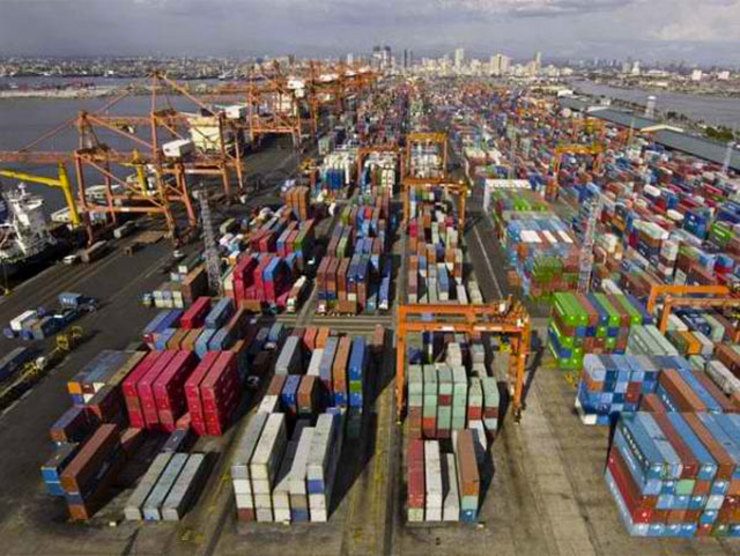SUMMARY
This is AI generated summarization, which may have errors. For context, always refer to the full article.

MANILA, Philippines – The Department of Transportation and Communications (DOTC) is pushing for a traffic scheduling system for importers moving in and out of the Manila harbor to maximize use of the ports.
Up to 7,300 twenty-foot equivalent units (TEUs) still need to be cleared at the ports of Manila to reach an ideal yard utilization of 80%, DOTC Secretary Joseph Emilio Abaya told reporters on Monday, November 17.
At present, utilization of the ports hovers between 85% and 90%, Abaya said.
To improve this, Abaya proposed that trucks be given a scheduled time to enter the ports for a more organized movement of shipment.
“Those containers are not just garbage cans that we push around,” Abaya said at the sidelines of The Ports Summit at the Manila Hotel.
The DOTC is planning to implement the scheduling system in February 2015, and is expecting a mixed reaction from truckers and brokers.
“Trucks should not be toward up there unless you have an appointment. So that in that way, they will stay in their garage, and you will only go to the ports on your scheduled time,” Abaya added.
A similar idea was floated by the International Container Terminal Inc (ICTSI) in October.
On October 7, Christian Lozano, ICTSI commercial director, said the operator is also planning to develop a ticketing system for importers where they could buy slots that indicate a particular window period where they can only move in and out of the port.
ICTSI operates the Manila International Container Terminal (MICT) which has a total capacity of 2.5 million TEUs. Asian Terminals Inc (ATI), meanwhile, operates the Manila South Harbor (MSH).
Both ports were caught in a gridlock when Manila imposed a truck ban in February.
The economy saw a decline in imports from $4.89 billion in June 2013 to $4.72 in June this year, according to the Philippine Statistics Authority.
Economists warned that a congested port will cause a continued price increase of basic commodities, with many companies struggling to transport their imported raw materials to their factories.
As the ban stood for months, the Philippine Ports Authority offered to shippers to transact and drop their cargos at the ports of Subic and Batangas instead. President Aquino supported this, and issued an Executive Order offering perks to Batangas port users.
In September, Manila lifted the daytime truck ban – after months of Manila City officials defending the rule, saying the ban was needed to ease traffic in the capital and nearby cities.
The Port Users Confederation (PUC) hosted the conference on Monday to gather government and private stakeholders to discuss issues that plague port operations and cargo transport efficiency.
PUC president and retired colonel Rodolfo T. De Ocampo said the conference aims to encourage dialogue between government and the private sector “to ensure that action points succeed without undue impact on trade.”
“These concerns cannot be solved swiftly, but with patience, understanding, and perseverance, we shall all overcome them,” De Ocampo said in his opening speech. – with reports from Mick Basa/Rappler.com
Add a comment
How does this make you feel?
There are no comments yet. Add your comment to start the conversation.